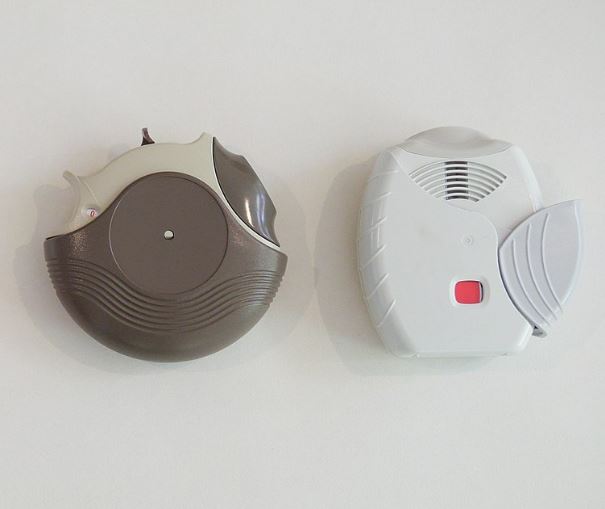Breathing is a fundamental aspect of life, yet for many, it doesn’t come as easily as it should. Inhalers have become a lifeline for those who suffer from respiratory conditions, ensuring that every breath is a little easier. This article will guide you through the proper use of inhalers, ensuring maximum benefit and safety.
Introduction to Inhalers
Inhalers, small yet powerful devices, have revolutionized the way we treat a variety of respiratory conditions. These handheld tools are designed to deliver medication directly to the lungs, offering immediate relief to those struggling to breathe. Asthma, a condition affecting approximately 339 million people worldwide, is one of the primary reasons individuals turn to inhalers. Chronic obstructive pulmonary disease (COPD), another major respiratory ailment, affects over 250 million people globally. Beyond these, conditions like bronchitis, emphysema, and certain types of allergic reactions also necessitate the use of inhalers. The prevalence of these conditions underscores the importance of inhalers in modern medicine. They come in various types, including metered-dose inhalers (MDIs), dry powder inhalers (DPIs), and soft mist inhalers (SMIs), each tailored to cater to specific needs and conditions. The primary goal, regardless of the type, remains consistent: to facilitate easier breathing and improve the quality of life for those with respiratory challenges.

Understanding the Different Types of Inhalers and Their Medications (Pharmacological Agents)
Inhalers have become an indispensable tool in the management of respiratory conditions. They are designed to deliver specific medications directly to the lungs, ensuring rapid and targeted relief. Let’s delve into the various types of inhalers and the kinds of medications they contain:
Metered-Dose Inhalers (MDIs)
Description
MDIs are the most commonly used type of inhaler. They release a specific amount of medication in aerosol form with each press.
Medications
- Bronchodilators: These relax the muscles around the airways. Examples include albuterol (Ventolin, ProAir) and levalbuterol (Xopenex).
- Corticosteroids: These reduce inflammation in the airways. Examples include fluticasone (Flovent) and budesonide (Pulmicort).
- Combination Inhalers: These contain both a bronchodilator and a corticosteroid. Examples include fluticasone/salmeterol (Advair) and budesonide/formoterol (Symbicort).
Dry Powder Inhalers (DPIs)
Description
DPIs deliver medication in powder form. Users must inhale more forcefully than with MDIs to draw the medication into the lungs.
Medications
- Long-Acting Bronchodilators: These provide relief for a more extended period. Examples include tiotropium (Spiriva) and salmeterol (Serevent).
- Corticosteroids: Examples include fluticasone (Flovent Diskus) and mometasone (Asmanex Twisthaler).
- Combination Inhalers: Examples include fluticasone/salmeterol (Advair Diskus) and budesonide/formoterol (Dulera).
Soft Mist Inhalers (SMIs)
Description
SMIs produce a fine mist that is slower moving than the aerosol from an MDI, allowing more medication to reach the lungs.
Medications
- Bronchodilators: These are primarily long-acting, like tiotropium (Respimat).
- Combination Inhalers: These might contain a combination of bronchodilators or a bronchodilator and a corticosteroid.
Nebulizers
Description
Though not a handheld inhaler, nebulizers are worth mentioning. They convert liquid medication into a fine mist that patients breathe in through a mouthpiece or mask.
Medications
- Short-Acting Bronchodilators: Examples include albuterol and levalbuterol.
- Long-acting bronchodilators: Such as formoterol.
- Corticosteroids: Like budesonide.
- Antibiotics: Such as tobramycin for specific conditions.
Step-by-Step Guide to Using an Inhaler
- Check the Expiry Date: Before using the inhaler, always check its expiry date. Expired medication may not be as effective.
- Shake the Inhaler: If you’re using an MDI, give it a good shake for about 5-10 seconds to mix the medication.
- Hold Upright: Hold the inhaler upright with the mouthpiece at the bottom.
- Breathe Out Fully: Exhale completely to empty your lungs of as much air as possible.
- Place the Mouthpiece: Put the mouthpiece in your mouth and close your lips around it. Ensure you have a good seal.
- Breathe in Slowly: As you start to breathe in, press down on the top of the inhaler to release the medication. Continue to breathe in slowly and deeply.
- Hold Your Breath: After inhaling, hold your breath for about 10 seconds or as long as comfortable. This allows the medication to settle in your lungs.
- Exhale Slowly: Breathe out slowly through your nose.
- Wait: If you need to take another puff, wait about 30 seconds to 1 minute before repeating the process.
- Rinse Your Mouth: After using your inhaler, especially if it contains corticosteroids, rinse your mouth with water to prevent any potential side effects like thrush.
Helpful Tips
- Maintenance is Key: Regularly clean your inhaler to ensure it works effectively. Follow the manufacturer’s instructions for cleaning.
- Track Dosages: Many inhalers come with dose counters. Keep an eye on this to know when it’s time for a refill.
- Use a Spacer: If you find it challenging to coordinate breathing in and pressing the inhaler, consider using a spacer. It helps deliver the medication more effectively.
- Store Properly: Keep your inhaler in a cool, dry place away from direct sunlight. Avoid leaving it in a car on a hot day.
- Practice Makes Perfect: If you’re new to using an inhaler, practice with your doctor or pharmacist. They can provide feedback and ensure you’re using it correctly.
- Know When to Seek Help: If you find that you’re using your inhaler more frequently than prescribed, or if it doesn’t seem to be working, consult your doctor. It might be a sign that your condition is worsening or that you need a different treatment approach.
Final Words
The type of inhaler and medication prescribed often depends on the specific respiratory condition, its severity, and the patient’s needs. It’s essential to understand the differences to ensure optimal treatment and management of respiratory ailments. Always consult with a healthcare professional to determine the best inhaler and medication for your individual circumstances.
